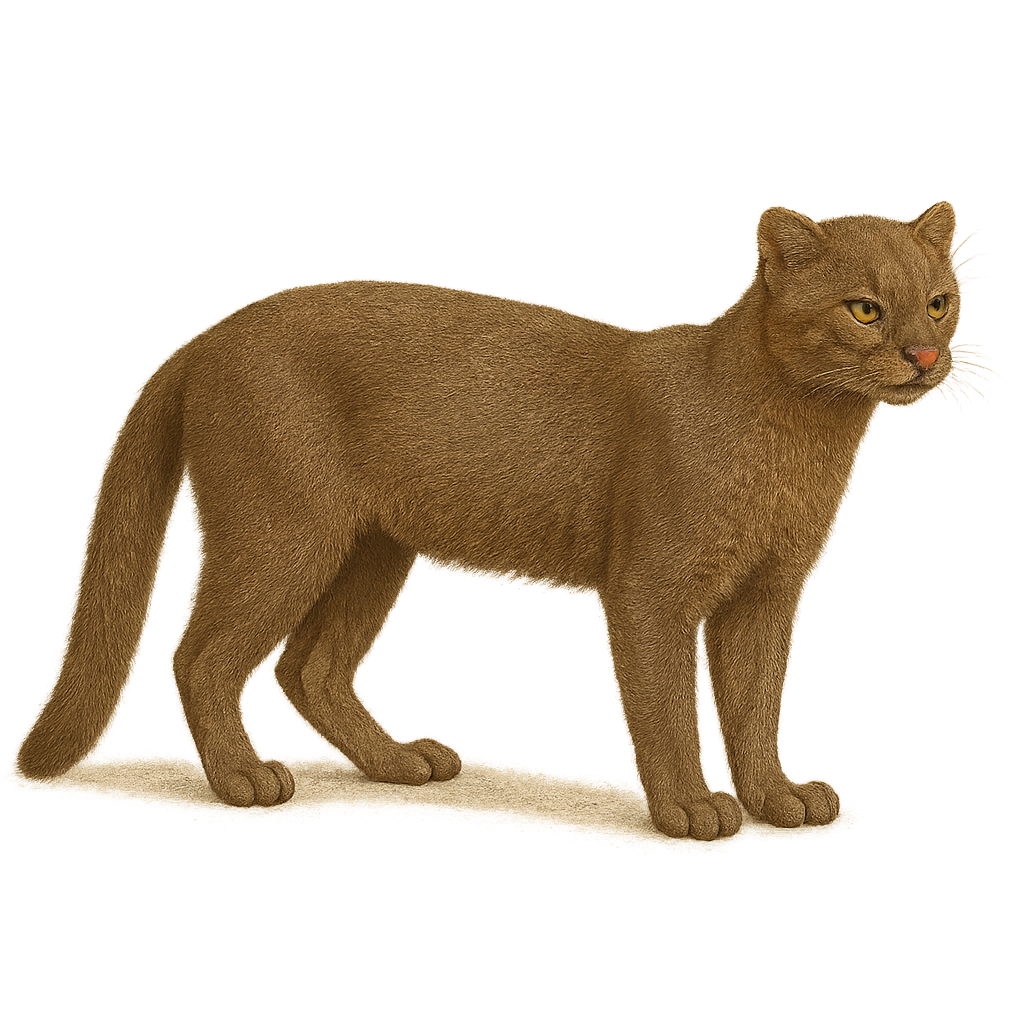Your wildlife photography guide.
Explore the Puma jaguarundi in detail, study its behavior, prepare your shots.
Where to observe and photograph the Puma jaguarundi in the wild
Learn where and when to spot the Puma jaguarundi in the wild, how to identify the species based on distinctive features, and what natural environments it inhabits. The WildlifePhotographer app offers tailored photography tips that reflect the Puma jaguarundi’s behavior, helping you capture better wildlife images. Explore the full species profile for key information including description, habitat, active periods, and approach techniques.
Puma Jaguarundi
Scientific name: Puma yagouaroundi

IUCN Status: Least Concern
Family: FELIDAE
Group: Mammals
Sensitivity to human approach: Suspicious
Minimum approach distance: 10 m
Rut period: December to January
Gestation: 70-75 jours
Births: February to March
Habitat:
Tropical forests, savannas, wetlands
Activity period :
Primarily active during the day, with peak activity in the morning and late afternoon.
Identification and description:
The Puma yagouaroundi, commonly known as the Puma jaguarundi, is a medium-sized feline native to the Americas. It is characterized by its elongated body, short legs, and long tail. Its coat is uniform, ranging from gray to reddish-brown, allowing it to blend into its surroundings. This feline is primarily solitary and territorial, marking its territory with glandular secretions. It is an opportunistic hunter, feeding on small mammals, birds, and reptiles. Although mainly terrestrial, it is also a good climber and swimmer. Its adaptability to various habitats, from tropical forests to savannas, makes it a resilient predator.
Recommended lens:
400 mm – adjust based on distance, desired framing (portrait or habitat), and approach conditions.
Photography tips:
To photograph the Puma jaguarundi, it is advisable to use a telephoto lens of 400mm or more to capture detailed images from a distance. Look for areas where it is likely to hunt, such as forest edges or near water sources. Be patient and discreet, as this feline is suspicious and can easily be frightened. Use a tripod to stabilize your camera and aim for crepuscular hours to benefit from soft, natural light.
The WildlifePhotographer App is coming soon!
Be the first to explore the best nature spots, track rutting seasons, log your observations, and observe more wildlife.
Already 1 439 wildlife lovers subscribed worldwide

